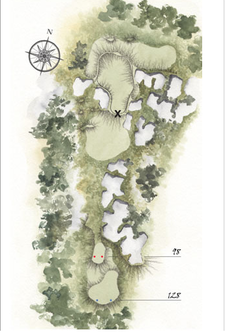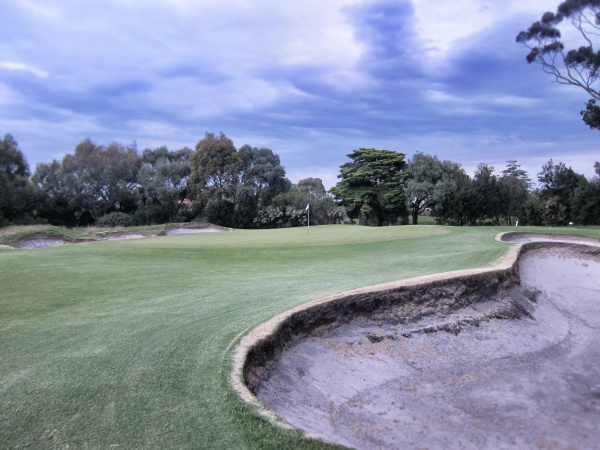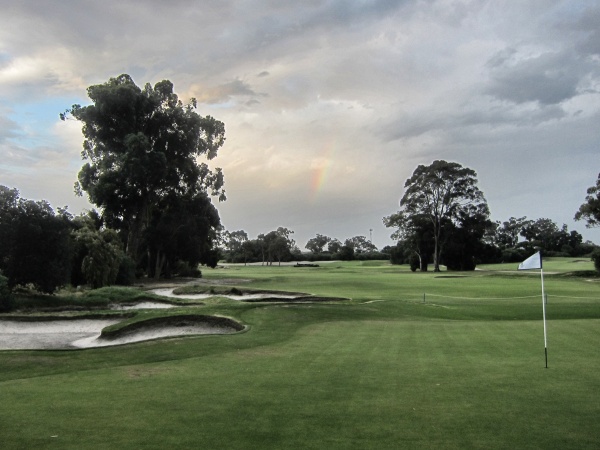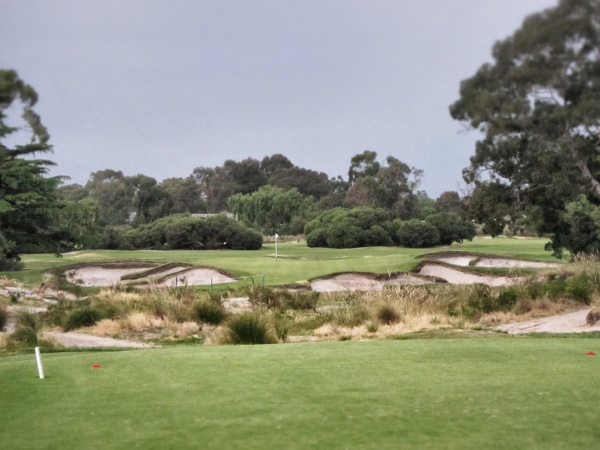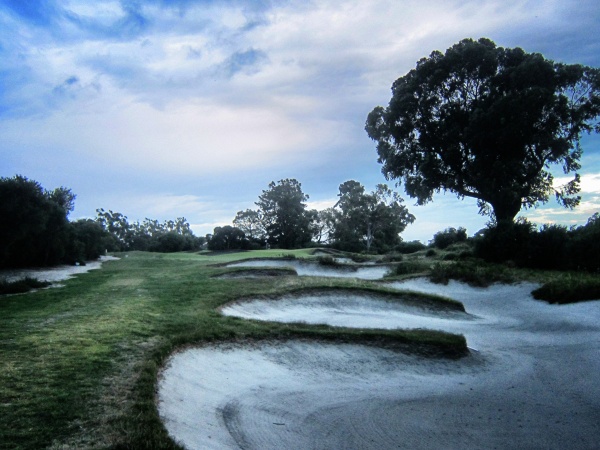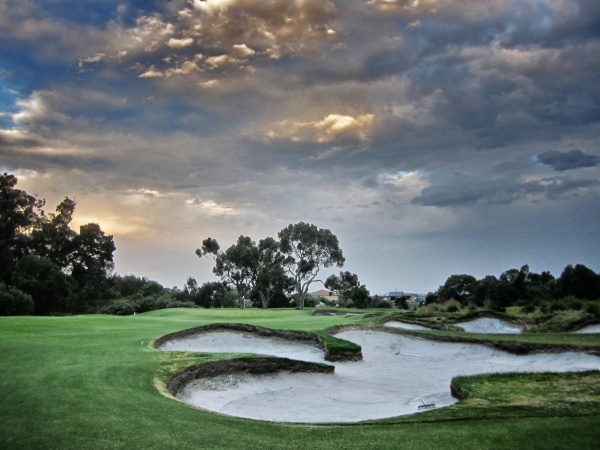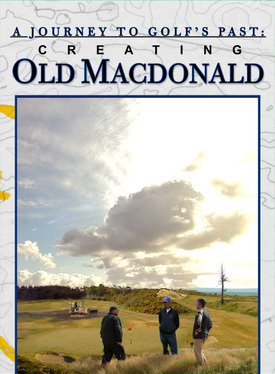R&A Chief Architect Dawson: Anchoring Ban Distracted Us From Announcing Most Extensive Old Course Changes In A Century
/Adam Lawrence previews a more extensive story he has coming in Golf Architecture following a tour of the controversial renovations with R&A architect Peter Dawson. Apparently, Martin Hawtree is using this time to renovate the Old Course...to be somewhere else. His hands-on attention to detail is quite impressive is it not?
Anyway, seat belts on. It's cringeworthy time...
But, though he acknowledges the communication of the works could have been handled better – “We were perhaps a little distracted by the announcement of the ban on anchoring”
 Whoa, whoa, whoa...this renovation was in the works for seven months! It involves the most historic course on the planet and the R&A Chief was distracted by the anchoring ban?
Whoa, whoa, whoa...this renovation was in the works for seven months! It involves the most historic course on the planet and the R&A Chief was distracted by the anchoring ban?
On a serious note, if you are too distracted to publicly share the master plan, the Photoshopped images simulating the proposed changes and from sharing a basic notice to the golfers in town of planned changes as you did in 2009 with the Jubilee Course, are you maybe a little too distracted to be implementing architectural changes to the oldest and most cherished venue in the world of sport?
Anyway, before I interrupted...
Dawson is firm in his belief that the works will improve the course, both for day to day play and in championship mode, and that, far from being untouched for hundreds of years, the course has repeatedly been changed, though he agrees that the current works are the biggest in a century.
A century! Well at least he knows his place in history.
Again, the biggest changes in a hundred years earned a Friday news dump press release followed by work on a Monday morning.
And, although he is happy to confirm that the impetus from the works came from the R&A's Championship Committee, he is at pains to explain that toughening the course for the professionals is not the sole goal of the works. Of the filling up of the hollow in the middle of the seventh fairway, he said: “That is something the Links Trust has been keen to do for many years. It collected so many balls, and was thus so full of divots that it had to be roped off and played as ground under repair for a large part of the year, which was a bit of an embarrassment.”
Now, in the old days, so the legend goes, when divots or rabbits burrowed, they often evolved into bunkers? Robert Hunter wrote lovingly about this in The Links (note to Peter and Martin: it's a book on golf architecture, you might enjoy it.)
So wouldn't a more historically accurate change have been to put a bunker in this 7th fairway hollow? Just saying...
Dawson talks at length--because Hawtree was apparently busy with a more pressing project--about the second hole changes, but that'll have to be in a separate post. (I know you can't wait.)
This is just mind-boggling:
On the fourth hole, the low dune formation that creates the left edge of the fairway in the drive zone is planned to be reduced next winter. “Personally I am not sure about that change, and I'm glad it isn't in the first phase, so we have more chance to think about it,” said Dawson.
The architect doesn't even like his own changes.
“The impetus has come from the greenkeepers – it was covered in rough during the 2005 Open, and the result was that almost nobody tried to hit their drive up the right. To create more width, we shaved the bank down in 2010, but it is very steep, and the greens staff have difficulty mowing it at that height.”
I'm just going to ignore the depressing notion that the greenkeepers are making suggestions related to strategy, and try to figure out which mound, excuse me, "acute spur formation," is under attack here. Dawson seems to first be talking about the large leftside grassy mound (pictured below), but how its height would discourage someone from driving down the gorse-lined right side is beyond me. I'm going with the gorse being the problem in that case.
Your honor, I submit to you a photo from 2010:
 4th hole center fairway view (click to enlarge)Then he's talking about the bump short of the green, which I take to be the acute spur formation that the maintenance crew can't mow. Your honor, I submit...
4th hole center fairway view (click to enlarge)Then he's talking about the bump short of the green, which I take to be the acute spur formation that the maintenance crew can't mow. Your honor, I submit...
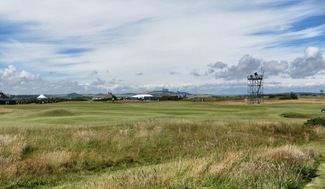
Pretty amazing after 400 years, and "before mowers were properly invented," that this bump was able to be cut. Maybe those modern mowers aren't that proper after all?
I thought this was a stretch regarding the 11th green:
“That pin is only used in winter at the moment,” said Dawson. “It's not just a question of being unusable at Open speeds – it can't be used even when the greens are at normal summer pace. The green would have to be slowed to six or seven on the Stimpmeter to make that pin usable.”
So the greens slow down four to five feet on the Stimpmeter during winter?
And it seems they are accentuating a feature on the Road hole, because that 4.6 scoring average last time wasn't enough.

The widening to the right is frankly relatively uncontroversial – it will now gather shots from slightly further out. To my eye more surprising is the addition of a slight gathering contour on the left side of the bunker, presumably to make the shot to the back left of the green – a route popularised in the 1990s by Nick Faldo – more challenging. This looks fine from the fairway, but from the eighteenth tee, a slight mound can be seen, which appears a little out of place.
Eh no one will notice. It's just the Road hole!
Meanwhile, Graylyn Loomis posted some high quality images of the work in progress.






